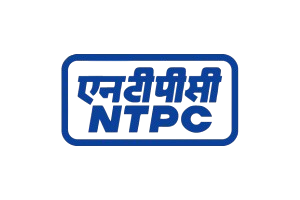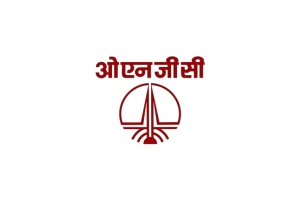The Great Dilemma : Arbitration, Mediation or Adjudication?
DATE: 05 Jan 2025
AUTHOR: Tarun Agarwal, Founder – AMFIN, Advocate, Arbitrator & Conciliator
Introduction
The Ministry of Finance’s June 2024[1] guidelines on dispute resolution in domestic procurement contracts mark a significant shift in policy. These guidelines discourage arbitration clauses in government-related contracts, especially for disputes exceeding Rs 10 crore. Instead, they emphasize alternative dispute resolution (ADR) mechanisms such as mediation and adjudication, which are perceived as more cost-effective and expeditious. While arbitration remains an option, its use is now subject to stringent scrutiny and high-level approval. This policy shift aims to modernize dispute resolution, reduce administrative burdens, and promote a more collaborative approach to resolving public procurement disputes.
Impact on Arbitration Practitioners
The abrupt shift away from arbitration raises concerns among arbitration practitioners who have developed extensive expertise in the field. Arbitration has long been valued for its efficiency and cost-effectiveness, especially when compared to traditional litigation and adjudication processes that tend to be more time-consuming. Arbitrators, as domain experts, ensure well-reasoned awards that generally withstand judicial scrutiny. The decision to limit arbitration in procurement contracts may undermine India’s growing arbitration culture, which has been strengthened by legislative and judicial reforms over the past decade.
A thorough empirical study should have preceded this policy change to evaluate its implications comprehensively. The move seems to be a knee jerk reaction, possibly influenced by the Supreme Court’s recent stance in Union of India and Anr. vs. Rashmi Metaliks Limited[2]. However, isolated cases where arbitral awards have been set aside do not justify broad restrictions on arbitration.
India’s Competitive Position in Arbitration
India has made significant progress in arbitration, particularly following the 2015 amendments to the Arbitration and Conciliation Act, 1996. These reforms positioned India as a potential global hub for arbitration. The Supreme Court’s ruling in PASL Wind Solutions v GE Power[3] reinforced India’s adaptability in the global arbitration landscape by confirming that Indian parties can opt for foreign-seated arbitration while still seeking interim relief under Section 9 of the Act. This ruling aligns with international arbitration practices and strengthens India’s arbitration regime.
The imposition of a monetary cap of INR 10 crore for arbitration could hinder arbitration’s growth and accessibility. Arbitration is valued for its flexibility and efficiency, and limiting its scope may discourage businesses especially SMEs from utilizing it. To maintain India’s competitiveness, fostering a robust domestic arbitration culture is crucial. Otherwise, Indian entities may increasingly turn to foreign-seated arbitrations, while continuing to seek interim relief in India, leading to an imbalanced dispute resolution framework.
Role of the Mediation Act, 2023
The enactment of the Mediation Act, 2023, represents a landmark development, providing statutory backing for settlement agreements and ensuring their enforceability. While mediation can be a valuable tool, its effectiveness depends on voluntary participation and goodwill. A hybrid approach, incorporating both mediation and arbitration through a MED-ARB clause, could be an optimal solution. This mechanism allows parties to attempt amicable settlement through mediation before resorting to arbitration if necessary. By integrating mediation into arbitration frameworks, dispute resolution can become more efficient while maintaining enforceability under the Mediation Act, 2023.
Conclusion
Consistency in dispute resolution reforms is vital. The legislative and judicial advancements introduced through the 2015, 2019, and 2021 amendments to the Arbitration and Conciliation Act, 1996 have significantly enhanced arbitration timelines, impartiality, and institutional arbitration in India. Moving forward, the focus should be on strengthening arbitration infrastructure, promoting institutional arbitration, and ensuring arbitrator independence and neutrality.
India’s ambition to establish itself as a global arbitration hub may be hindered by the Ministry of Finance’s guidelines on domestic arbitration which limit the use of arbitration in large procurement contracts for public sector enterprises. A robust and conducive arbitration culture at the national level is essential for gaining international trust and recognition. A balanced approach where mediation is encouraged but arbitration remains accessible is key to preserving business relationships while ensuring effective dispute resolution.
A MED-ARB clause could serve as an ideal mechanism, combining the collaborative benefits of mediation with the finality of arbitration. Instead of restricting arbitration through financial thresholds, the government should work toward reinforcing India’s status as an arbitration-friendly jurisdiction, ensuring a dispute resolution framework that is both progressive and internationally competitive.
Footnotes:
[1] Ministry of Finance, Guidelines for Arbitration and Mediation in Contracts of Domestic Public Procurement,
F.1/2/2024-PPD (Issued on June 3, 2024).
[2] Union of India & Anr. v Rashmi Metaliks Limited (Supreme Court of India, SLPC 49369/2023, 24 January 2024).
[3] PASL Wind Solutions Private Limited v GE Power Conversion India Private Limited (Supreme Court of India,
SLPC 1647/2021, 20 April 2021).
Conference Participating Organizations







